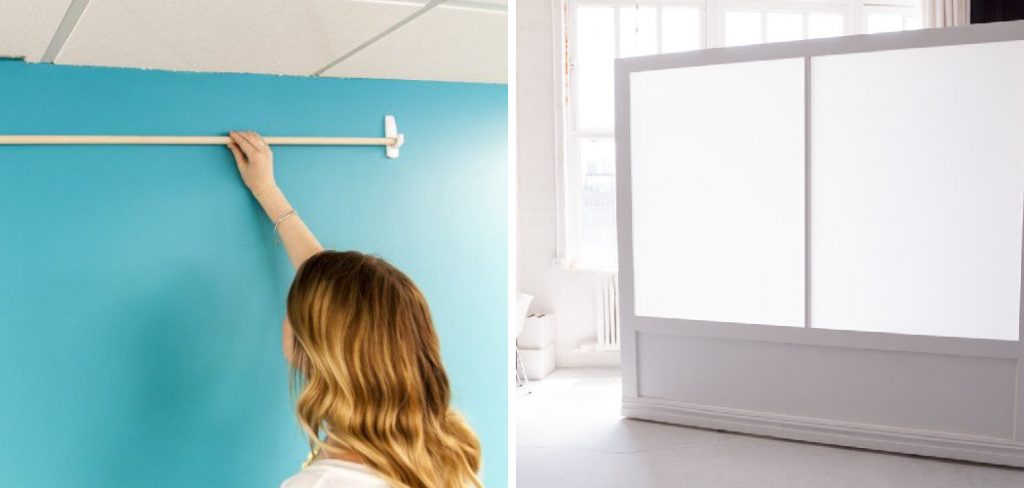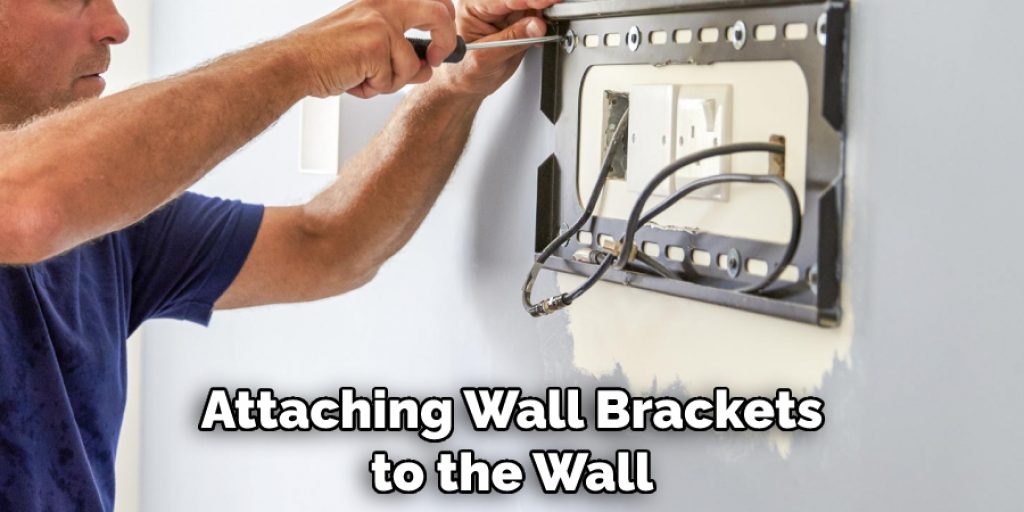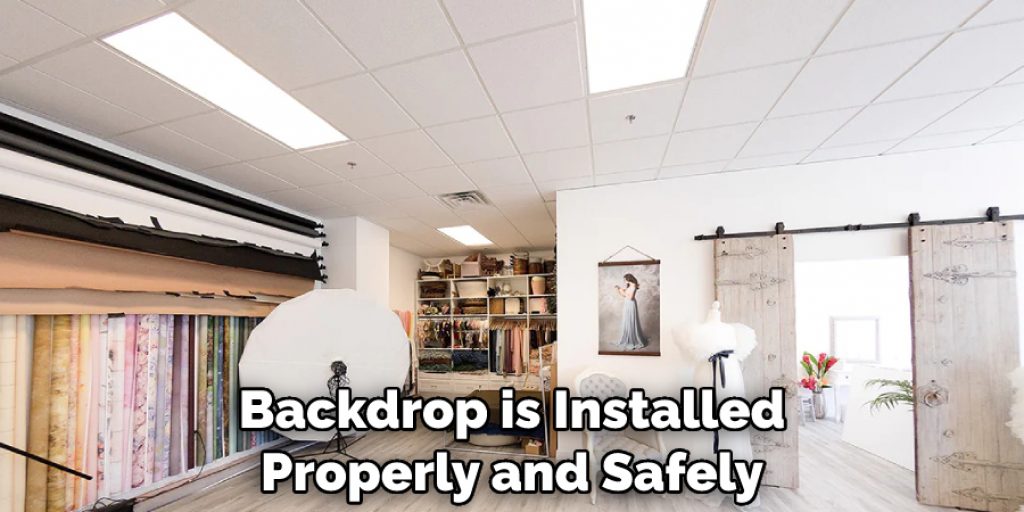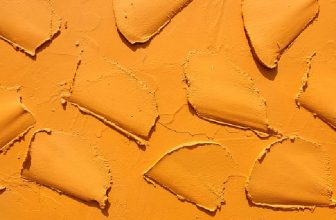How to Hang a Backdrop on a Wall
Hanging a backdrop on a wall is an easy and effective way to create an eye-catching display in your home or office. Not only does it create the perfect setting for photos, but it can also add color and texture to any space. Whether you’re looking to jazz up a drab hallway or make your living room more inviting, hanging a backdrop on the wall is the perfect way to do it.

Hanging a backdrop on a wall is an excellent way to create the perfect photographic scene. It can also be used to add a unique touch to any event or space you are hosting. There are several advantages of hanging a backdrop on a wall instead of using traditional photography backgrounds. In this blog article, you can find step-by-step instructions on how to hang a backdrop on a wall.
Step-by-Step Processes for How to Hang a Backdrop on a Wall
Step 1: Inspect the Wall
Start by inspecting the wall where you plan to hang your backdrop. Make sure it has no cracks or bulges that could affect how securely it holds your backdrop in place, and also, check to see if any studs can help you secure it.
Step 2: Measure & Mark
Once you have inspected the wall, measure out the size of your backdrop with measuring tape and mark the wall with a pencil where you plan to place it. This will help you make sure that it is perfectly straight when you hang it up. Next, secure wall hooks or nails in the marked spots on the wall in order to hang your backdrop. Make sure the hooks are placed at an even distance apart so that your backdrop hangs properly.
Step 3: Attach Backdrop
Once you have secured the wall hooks, attach your backdrop to them using string or twine. Make sure to make a loop with the string and tie it securely around each hook. Once your backdrop is attached to the wall hooks or nails, hang it up and make sure that it is straight. You can add support for the backdrop by using clips to hold the sides in place.
Step 4: Attach Wall Brackets
If you plan on keeping your backdrop up for a long time, consider attaching wall brackets to the wall that can support the weight of your backdrop. This will help keep it from sagging over time. If you need to cut out any openings for lights or other equipment, make sure to do this once the backdrop is already hung up and supported. This will ensure that it remains straight and even.

Step 5: Add Trim & Accessorize
After you have all of the necessary openings cut out, consider adding trim or other decorative elements to your backdrop for added visual appeal. You can also add accessories like fabric banners to give it a more complete look. Once you have all of your trim and accessories in place, secure the backdrop to the wall using screws or nails. This will help prevent it from falling or shifting as time passes.
Following these steps will help you hang a backdrop on a wall safely and securely, resulting in an eye-catching addition to any room or event space.
Tips for How to Hang a Backdrop on a Wall
- Wear appropriate safety gear such as eyewear, gloves, and a dust mask when hanging a backdrop on a wall to protect yourself from potential hazards.
- Before beginning work, the backdrop is securely attached to the wall with screws or nails. A good quality fastener should be used instead of relying on adhesive alone.
- Make sure the backdrop is level before attaching it to the wall. This will prevent any twisting or sagging from occurring once it is hung.
- Consider using a stud finder to locate studs in your wall before driving screws into them. This will help ensure that you drive the screw properly and avoid damaging the wall.
- Make sure to measure twice before drilling any holes into the wall. This will help prevent mistakes and ensure you get the desired result.
- When using adhesive, ensure it is of good quality and appropriate for use on the materials you attach. Also, take time to clean any surfaces prior to applying adhesive.
- After hanging the backdrop, double-check all fasteners to ensure they are securely in place and check for any potential sagging or twisting of the material. This will help ensure that your backdrop is installed properly and safely.

Following these tips can help you successfully and safely hang a backdrop on a wall. For best results, always consult a professional if you are uncertain about any steps in the process.
Are There Any Maintenance Considerations for Backdrops Hung on Walls?
When you hang a backdrop on a wall, it is important to consider the long-term effects of hanging your backdrop. Over time, the weight of the fabric may cause some damage to the walls if not hung with care. If possible, when mounting your backdrop directly to a wall, use specialized brackets that help relieve and disperse the pressure so that it is not concentrated in one area.
Additionally, you may want to consider using a lightweight backdrop material such as muslin or canvas to reduce the strain on your wall. Depending on your wall type, it’s also important to use appropriate screws and wall anchors to ensure the backdrop is securely attached so it won’t shift or become loose over time.
Finally, check regularly to ensure the backdrop is secure and not causing any damage to the wall. By following these steps, you can ensure your backdrop remains in good condition for years to come. Suppose you don’t want to or are unable to mount a backdrop on a wall permanently.
In that case, there are several other options available such as renting or buying a backdrop stand, using adhesive hooks to hang it on the wall, and even setting up a tepee-style frame. Depending on your needs and preferences, any of these options can be used to hang a backdrop in your space without causing damage.
Are There Any Potential Safety Risks Associated With Hanging and Using Backdrops?
Yes, there are potential safety risks associated with hanging and using backdrops. When hanging a backdrop on a wall, it is important to ensure the backdrop is securely fastened to prevent any accidents or injury. It is also important to be careful when moving around and near the backdrop to avoid tripping over it or knocking it over.

Additionally, it is important to ensure that the backdrop has no sharp edges or objects that could cause injury if they come in contact with skin.
Finally, be sure to inspect any elements of the backdrop before use; check for signs of damage or wear and tear to prevent any mishaps during use. By taking these simple precautions, you can ensure your backdrop is hung safely and securely. Once the backdrop is hung, there are also maintenance considerations to keep in mind.
To keep the backdrop looking its best, it should be cleaned periodically with a damp cloth or lightly vacuumed to remove any dust or dirt that may have accumulated over time.
How Do You Clean and Store a Backdrop After Use?
Once you have finished using your backdrop, it’s important to clean and store the item for future use properly. To ensure a long life for your backdrop, thoroughly cleaning it after each use is best practice. Start by lightly dusting the material with a soft brush or cloth, taking extra care around decorative elements such as hems and grommets.
To remove deeper stains, spot-clean the area with a mild cleaning solution or upholstery shampoo. Allow the fabric to air dry completely before storing in a cool, dry place away from direct sunlight. It’s also important to avoid overloading your backdrop when folding or rolling it for storage; this can cause deformation and wrinkles. When folding the backdrop, do so in even sections to prevent pressure points from developing.

How Can You Get the Most Professional Looking Results When Hanging Your Backdrop?
Properly hanging a backdrop on a wall is key to getting the most professional look for your space. Here are five tips to make sure you get it right:
- Make sure you have the proper hardware for hanging your backdrop securely. You can purchase heavy-duty picture hooks and anchors in any hardware store.
- Measure the height and width of your backdrop and use a level to ensure you hang it straight. Don’t forget to measure the wall, too!
- Use painter’s tape to mark where you want to hang your backdrop on the wall – this will help you get an even line of hooks or pictures when you hang your backdrop.
- When attaching the hooks, be sure to use anchors so that your backdrop is secure and doesn’t pull off the wall over time. If you’re using screws and washers, insert them into the wall just enough so they can hold the weight of your backdrop without coming loose from the wall.
Following these five simple tips will ensure that you get the most professional-looking results when hanging your backdrop on a wall. With the right hardware, careful measurements, and a few easy steps, you’ll have a beautiful backdrop that looks amazing for years to come.

Conclusion
The main disadvantage of hanging a backdrop on a wall is that the walls must be strong enough to support the weight of the backdrop. If not, it could cause damage to both the wall and the backdrop itself. Additionally, if you are using a large or heavy backdrop, you may need additional hardware, such as anchors or cleats, to ensure your backdrop is securely hung.
In conclusion, hanging a backdrop on a wall is not as difficult as it may seem. Following the necessary steps, you can set up your scene and be ready to go. Start by measuring the area you’d like to hang your backdrop, affixing any support materials needed for heavier fabrics, such as batting or masonite boards, and hanging it up on the wall using clamps, curtain rod brackets, eye hooks, or screws.
I hope this article has been beneficial for learning how to hang a backdrop on a wall. Make Sure the precautionary measures are followed chronologically.




